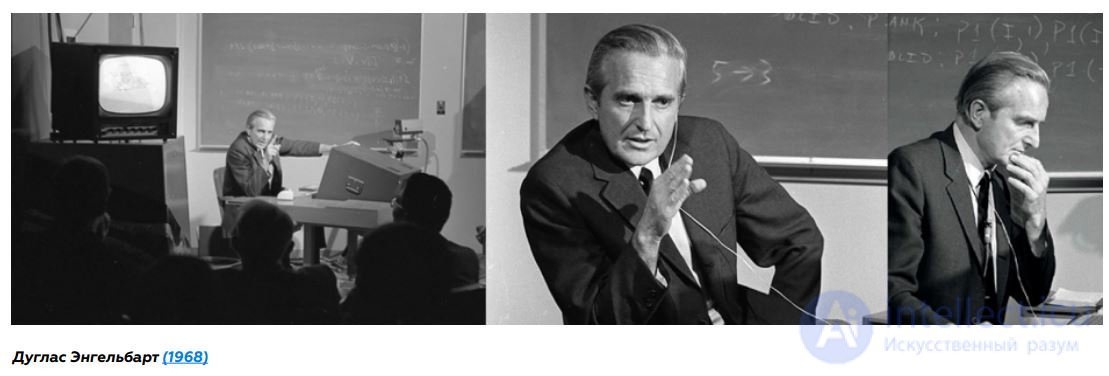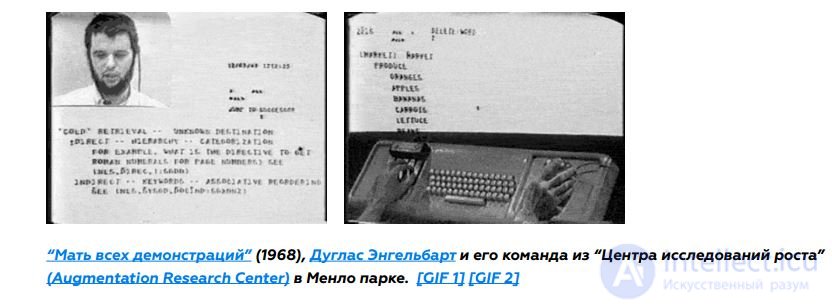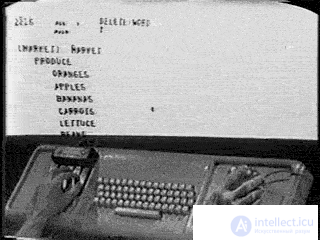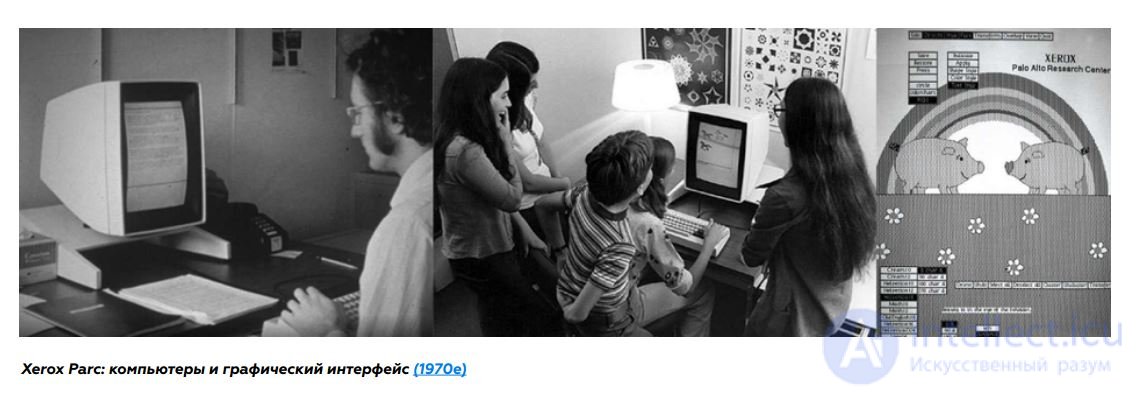Lecture
In his article “How we can think,” Vanivvar Bush (Vannevar Bush, “As We May Think”, 1949) describes an imaginary “memex” - a table-like device with which people can search through an article library by pressing buttons and switching levers. [four]. Although Bush's memex is completely mechanical, it implies the use of hyperlinks, notes and bookmarks to empower the human brain in researching and processing information: that is, in essence, this is the Internet.

This article inspired young Douglas Engelbart: he quit his job and entered graduate school at the University of California at Berkeley [5]. There, in 1962, he wrote a paper on “Strengthening Human Intelligence: A Conceptual Framework” (Augmenting Human Intellect: A Conceptual Framework). In this report, Engelbart - inspired by the concept of Memex Bush - described “a typewriter [that] will provide us with a new text-writing process (..) We will be able to quickly work out new ideas, which means that we will more often use creativity (..) we develop and apply even more complex processes in order to get even more benefits from our abilities ... ”[6].

Engelbart had not only a vision of human interaction with a computer system, but also a philosophy of such interaction [7]. He believed that computers could be used to expand our thinking, representation and association processes [8]. Engelbart wanted not only to automate processes, but also to repeatedly increase the capabilities of a person with the help of a system that will enhance and complement our intellect, our nature and our creativity. His goal was to increase human potential [9].

Ivan Sutherland is a student of Claude Shannon, who in turn was a student of Vanivar Bush. Already in 1963, Ivan, inspired by memeksom, developed his system. His dissertation project Sketchpad [10] is considered the progenitor of modern computer-aided design (CAD - computer-aided design) programs [11]. Sketchpad demonstrated the potential of interactive computer graphics in engineering and creativity.

The simplest way to simplify the process of purchasing or registering via a mobile device is “The Mother of All Demonstrations” (1968), Douglas Engelbart and his team from the “Growth Research Center” (Menlo Park). Within a few years, the Stanford Growth Research Center (ARC - Augmentation Research Center), invented several technologies that have survived to the present day. Among them - a video conference and a computer mouse [12]. At the same time, John McCarthy founded the Stanford Artificial Intelligence Laboratory (SAIL - Stanford Artificial Intelligence Laboratory). The McCarthy group sought not to strengthen, but to completely replace human intelligence with electronic [13]. Doctors of science, hackers and college students, including Steve Wozniak and Steve Jobs, studied artificial intelligence at the Engelbart Center and the McCarthy Laboratory [14].





In 1970, [15] Xerox (a paper company) decided to fund a Palo Alto Research Center research and development center (PARC). This project quickly attracted the attention of ARC and SAIL veterans who were burning with the desire to work with personal computers, user interfaces and graphics. Many innovations (such as ethernet) were made on the basis of Palo Alto, and a new metaphor for creative interaction with a computer system, the desktop, appeared. Shortly after the opening of the Xerox center, a less formal, but equally important computer community emerged: The Homebrew Computing Cub. The "Home Club" consisted of a motley public: anti-war activists, engineers and programmers. Many companies were born on the basis of the “club”: such as Apple and Microsoft, as well as technologies - for example, a personal computer (PC) [16]

Comments
To leave a comment
machine art
Terms: machine art